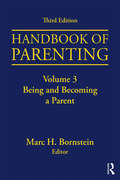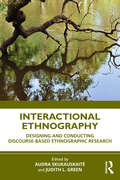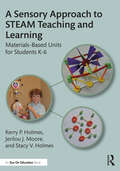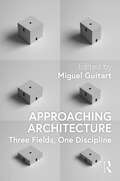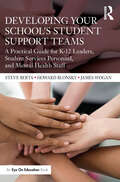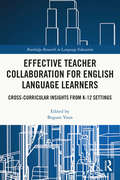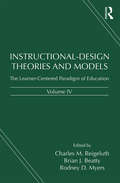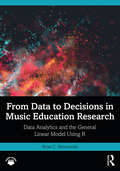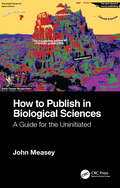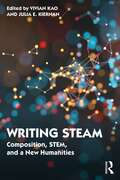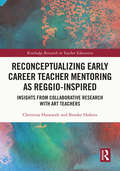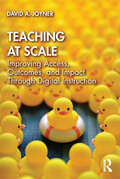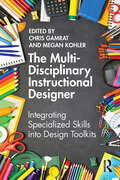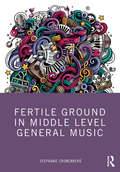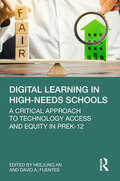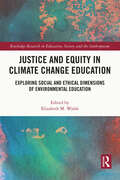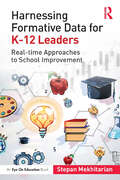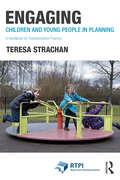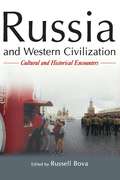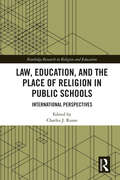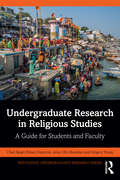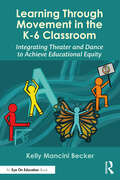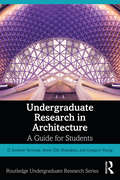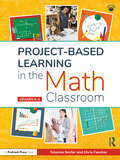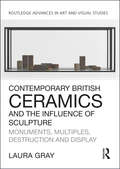- Table View
- List View
Handbook of Parenting: Volume 3: Being and Becoming a Parent, Third Edition
by Marc H. BornsteinThis highly anticipated third edition of the Handbook of Parenting brings together an array of field-leading experts who have worked in different ways toward understanding the many diverse aspects of parenting. Contributors to the Handbook look to the most recent research and thinking to shed light on topics every parent, professional, and policymaker wonders about. Parenting is a perennially "hot" topic. After all, everyone who has ever lived has been parented, and the vast majority of people become parents themselves. No wonder bookstores house shelves of "how-to" parenting books, and magazine racks in pharmacies and airports overflow with periodicals that feature parenting advice. However, almost none of these is evidence-based. The Handbook of Parenting is. Period. Each chapter has been written to be read and absorbed in a single sitting, and includes historical considerations of the topic, a discussion of central issues and theory, a review of classical and modern research, and forecasts of future directions of theory and research. Together, the five volumes in the Handbook cover Children and Parenting, the Biology and Ecology of Parenting, Being and Becoming a Parent, Social Conditions and Applied Parenting, and the Practice of Parenting.Volume 3, Being and Becoming a Parent, considers a large cast of characters responsible for parenting, each with her or his own customs and agenda, and examines what the psychological characteristics and social interests of those individuals reveal about what parenting is. Chapters in Part I, on The Parent, show just how rich and multifaceted is the constellation of children’s caregivers. Considered first are family systems and then successively mothers and fathers, coparenting and gatekeeping between parents, adolescent parenting, grandparenting, and single parenthood, divorced and remarried parenting, lesbian and gay parents and, finally, sibling caregivers and nonparental caregiving. Parenting also draws on transient and enduring physical, personality, and intellectual characteristics of the individual. The chapters in Part II, on Becoming and Being a Parent, consider the intergenerational transmission of parenting, parenting and contemporary reproductive technologies, the transition to parenthood, and stages of parental development, and then chapters turn to parents' well-being, emotions, self-efficacy, cognitions, and attributions as well as socialization, personality in parenting, and psychoanalytic theory. These features of parents serve many functions: they generate and shape parental practices, mediate the effectiveness of parenting, and help to organize parenting.
Interactional Ethnography: Designing and Conducting Discourse-Based Ethnographic Research
by Audra SkukauskaitėFocusing specifically on Interactional Ethnography (IE) as a distinct, discourse-based form of ethnography, this book introduces readers to the logic and practice behind IE and exemplifies the logic of ethnographic inquiry through a range of example-based chapters.Edited by two of the foremost scholars in the field of IE, this book brings together a body of work that has until now been largely dispersed. Illustrating how IE intersects with ethnographic methods – including observation, interviews, and fieldwork – the book highlights considerations relating to data analysis, researcher positionality, and the ethics of engaging participants in research. Offering examples of IE in international contexts and across a range of social science and educational settings, the book provides foundational principles and key examples of IE to guide readers’ work.This book offers researchers, scholars, and teacher educators a definitive, novel contribution to current methodological literature on IE broadly, and will be of particular use to ethnographers starting out in their career. Due to the interdisciplinary nature of the volume in illustrating the use of IE in a range of educational sub-disciplines, the book’s relevance extends to the fields of medical education, teacher education, arts and literacy research, as well as providing situated examples of IE in settings with relevance to the social sciences, anthropology, and cultural studies.
A Sensory Approach to STEAM Teaching and Learning: Materials-Based Units for Students K-6
by Kerry P. Holmes Jerilou J. Moore Stacy V. HolmesDid you know you have the power and the materials at your fingertips to facilitate the actual brain growth of students?This book is a practical resource to engage K-6 students with STEAM content through their five senses: seeing, listening, touch/movement, smell and taste. It combines historical research, practical suggestions, and current practices on the stages of cognitive development and the brain’s physical response to emotion and novelty; to help you learn ways to transform ordinary lesson plans into novel and exciting opportunities for students to learn through instruction, exploration, inquiry, and discovery.In addition to providing examples of sensory-rich unit plans, the authors take you through the step-by-step process on how to plan a thematic unit and break it down into daily seamless lesson plans that integrate science, technology, engineering, arts, and mathematics.With 25 themed STEAM unit plans and activities based on national standards, up-to-date research on brain science, and real classroom experience, this book shows multiple ways to develop and deliver active multisensory activities and wow your students with sights and sounds as soon as they come through the door of your classroom.
Approaching Architecture: Three Fields, One Discipline
by Miguel GuitartThe study of the architectural discipline suffers from an increasing disconnect between its teaching and its professional practice. In this edited collection, 18 architectural voices address this disconnect by reflecting on the ways in which they exercise the architectural discipline in three ways: research, teaching, and practice. This book argues that the totality of activities encompassed by the architectural profession can be best fulfilled when reconsidering the critical interactions between these three fields in the everyday exercise of the profession. Split into three parts, "Architecture as Research," Architecture as Pedagogy," and "Architecture as Practice," each section focuses on one of these three dimensions while establishing continuity with the other two. In doing so, the book not only favors a more fulfilling interaction between academia and the profession but also reinforces the implementation of design theory and research in everyday teaching and practice. The contributions come from 18 teams of architects operating from geographically diverse locations, including Pezo von Ellrichshausen in Chile, Kengo Kuma & Associates in Japan, Barclay & Crousse in Peru, Shift in Iran, Heinrich Wolff in South Africa, and People’s Architecture Office in China, opening the design conversation to larger contexts and framing continuity and inclusion in time. Written for students, instructors, and practitioners alike, the inspiring reflections in this volume encourage readers to grow as architects and play an instrumental role in transforming the built environment.
Developing Your School’s Student Support Teams: A Practical Guide for K-12 Leaders, Student Services Personnel, and Mental Health Staff
by Steve Berta Howard Blonsky James WoganDeveloping Your School’s Student Support Teams is a practical manual for schools seeking to establish and sustain coordinated teams in support of students’ social, emotional and behavioral health. Every day, students struggle with a range of issues, including traumas, that complicate their learning, engagement, and overall well-being. School psychologists, counselors, social workers and nurses are employed in many school districts, but their schedules often make it difficult to collaborate effectively in developing and implementing comprehensive intervention plans. This book promotes teamwork throughout schools by exploring how interdependent practitioners can come together at the appropriate levels and times to help coordinate school and community resources. This "filtering" process will guide K-12 leaders and service professionals toward systems and decision-making that enable long-term student supports, accurate identification of systemic learning barriers, improved school culture and climate, attention to diverse populations, and more. With these proactive teamwork strategies, school staff will be better prepared to share workload and accountability and to identify and build upon the existing strengths and supports of every student.
Effective Teacher Collaboration for English Language Learners: Cross-Curricular Insights from K-12 Settings (Routledge Research in Language Education)
by Bogum YoonThis volume explores the value of teacher collaboration in meeting the needs of diverse English language learners (ELLs). A range of research-based chapters demonstrate examples of effective collaboration between English language specialists and content area teachers and offer recommendations for collaborative practice.Foregrounding the ways in which teacher collaboration can better support the needs of ELLs in elementary, middle, and high school classrooms, this volume provides evidence-based insights and suggestions to underpin effective teacher collaboration across the curriculum. Through case study examples, readers can understand common challenges and pitfalls, as well as best practices and how to apply teacher collaboration in real classroom settings. Research studies in subject areas including mathematics, science, and English language arts provide a basis for practical, evidence-based recommendations to engender mutual trust, teacher agency, and the development of shared goals to enhance instruction for ELLs’ achievement.This book provides educators with new insights from empirical studies, and is vital reading for researchers, scholars, teachers, and teacher educators who are aware of the importance of collaboration for student success. Those involved in ESL, bilingual, and dual language programs may be particularly interested in this volume.
Instructional-Design Theories and Models, Volume IV: The Learner-Centered Paradigm of Education
by Charles M. Reigeluth, Brian J. Beatty, and Rodney D. MyersInstructional-Design Theories and Models, Volume IV provides a research-based description of the current state of instructional theory for the learner-centered paradigm of education, as well as a clear indication of how different theories and models interrelate. Significant changes have occurred in learning and instructional theory since the publication of Volume III, including advances in brain-based learning, learning sciences, information technologies, internet-based communication, a concern for customizing the student experience to maximize effectiveness, and scaling instructional environments to maximize efficiency.In order to complement the themes of Volume I (commonality and complementarity among theories of instruction), Volume II (diversity of theories) and Volume III (building a common knowledge base), the theme of Volume IV is shifting the paradigm of instruction from teacher-centered to learner-centered and integrating design theories of instruction, assessment, and curriculum. Chapters in Volume IV are collected into three primary sections: a comprehensive view of the learner-centered paradigm of education and training, elaborations on parts of that view for a variety of K-12 and higher education settings, and theories that address ways to move toward the learner-centered paradigm within the teacher-centered paradigm. Instructional-Design Theories and Models, Volume IV is an essential book for anyone interested in exploring more powerful ways of fostering human learning and development and thinking creatively about ways to best meet the needs of learners in all kinds of learning contexts.
From Data to Decisions in Music Education Research: Data Analytics and the General Linear Model Using R
by Brian C. WesolowskiFrom Data to Decisions in Music Education Research provides a structured and hands-on approach to working with empirical data in the context of music education research. Using step-by-step tutorials with in-depth examples of music education data, this book draws upon concepts in data science and statistics to provide a comprehensive framework for working with a variety of data and solving data-driven problems.All of the skills presented here use the R programming language, a free, open-source statistical computing and graphics environment. Using R enables readers to refine their computational thinking abilities and data literacy skills while facilitating reproducibility, replication, and transparency of data analysis in the field. The book offers: A clear and comprehensive framework for thinking about data analysis processes in a music education context. An overview of common data structures and data types used in statistical programming and data analytics. Techniques for cleaning, preprocessing, manipulating, aggregating, and mining data in ways that facilitate organization and interpretation. Methods for summarizing and visualizing data to help identify structures, patterns, and trends within data sets. Detailed applications of descriptive, diagnostic, and predictive analytics processes. Step-by-step code for all concepts and analyses. Direct access to all data sets and R script files through the accompanying eResource. From Data to Decisions in Music Education Research offers a reference "cookbook" of code and programming recipes written with the graduate music education student in mind and breaks down data analysis processes and skills in an approachable fashion. It can be used across a wide range of graduate music education courses that rely on the application of empirical data analyses and will be useful to all music education scholars and professionals seeking to enhance their use of quantitative data.
How to Publish in Biological Sciences: A Guide for the Uninitiated
by John MeaseyThis book is a guide specifically for Early Career Researchers on how to publish in the Biological Sciences, whether that be your first manuscript or if you’re already experienced – there’s something for everyone.Following on from How to Write a PhD in Biological Sciences: A Guide for the Uninitiated, it will guide you through taking your manuscript to publication in peer-reviewed journals and disseminating your research more broadly. It talks you through the peer-review process, including how to respond to reviewers’ comments, the meaning and importance of Impact Factors and how to get citations. It also explores the challenges in the academic community around Open Access and other debates, including transparency, overlay journals, paywalls, publication bias, predatory journals and the dangers of bullying.Whether you are a student just completing your studies, or a supervisor struggling with rejections, this book will provide the insider information you need to get ahead.
Writing STEAM: Composition, STEM, and a New Humanities
by Vivian KaoThis edited collection positions writing at the center of interdisciplinary higher education, and explores how writing instruction, writing scholarship, and writing program administration bring STEM and the humanities together in meaningful, creative, and beneficial ways.Writing professionals are at the forefront of a cross-pollination between STEM (Science, Technology, Engineering, and Mathematics) and the arts and humanities. In their work as educators, scholars, and administrators, they collaborate with colleagues in engineering, scientific, technical, and health disciplines, offer new degree programs that allow students to bring the humanities to bear on design experiments, and build an academic culture that promotes a vision of the humanities in the twenty-first century, as well as a vision of technology that is decidedly human. This collection surveys and promotes that work through chapters focused on writing instruction, writing scholarship, and writing program administration, covering topics that include data-driven writing courses, public science communication, non-traditional college students, creative writing, gamification, skills transfer, and Writing Across the Curriculum programs. Writing STEAM will be essential reading for scholars, instructors, and administrators in writing studies, rhetoric and composition, STEM, and a variety of interdisciplinary programs; it will aid in teacher training for both humanities and STEM courses focused on writing and communication.
Reconceptualizing Early Career Teacher Mentoring as Reggio-Inspired: Insights from Collaborative Research with Art Teachers (Routledge Research in Teacher Education)
by Christina Hanawalt Brooke HofsessReconceptualizing Early Career Teacher Mentoring as Reggio-Inspired presents an innovative approach to early career art teacher mentoring informed by both the philosophy of Reggio Emilia and an ontology of immanence while simultaneously illuminating the experiences of the teacher-participants as co-inquirers within the contemporary milieu of public education in the United States.Readers are invited to travel with a group of teacher educators and early career PK-12 art teachers across a four-year journey to experience the evolving nature of a collaborative inquiry through mentoring-as-research, the Teacher Inquiry Group (TIG). The authors share significant insights regarding what it means to be an early career art teacher––especially in an educational climate steeped in neoliberal agendas, standardization, and accountability––and make potent suggestions for re-visioning entrenched approaches to mentoring and professional learning that better account for the inherent complexities of teaching in schools. Advocating for more complex understandings regarding teacher subjectivity and the contextual forces at work in schools, the authors provoke an expanded vision of how mentoring can be imagined, practiced, and lived in current educational contexts. The authors employ key orientations grounded in the Reggio Emilia philosophy to reimagine an under-researched and undertheorized area of study in art education-––early career teacher mentoring––that has implications for teachers at all levels and across all disciplines. This volume is essential reading for scholars and professionals across the fields of art education, teacher preparation, teacher education, and mentoring. It will appeal to educational researchers, K-12 practitioners, teacher educators, and administrators working with new teachers, as well as those interested in mentoring, Reggio Emilia, professional learning and development, art and aesthetic education, and emergent, process-oriented research methodologies.
Teaching at Scale: Improving Access, Outcomes, and Impact Through Digital Instruction
by David JoynerTeaching at Scale explores the characteristics and parameters of large-scale online learning by identifying, in its perceived drawbacks, a wealth of educational opportunities in disguise. Scalable learning platforms have exploded in popularity over recent years, with MOOCS (massive open online courses), online degree programs, informal learning communities, and alternative credentials all drawing significant enrollments. But, as many educators are asking, are the challenges to delivering education at scale too great and the compromises too many? This book guides instructors to leverage their complex responsibilities—open-ended assessments at scale, individuated feedback to students, academic integrity in less controlled environments, and more—into significant assets. Informed by real-world institutional experience as well as key research in cognitive science and the learning sciences, each chapter provides practical strategies for educators and administrators seeking to solve problems and fulfill the high-quality, broad-access potential of large-scale instruction for lifelong learners.
The Multi-Disciplinary Instructional Designer: Integrating Specialized Skills into Design Toolkits
by Chris Gamrat Megan KohlerThe Multi-Disciplinary Instructional Designer explores how the instructional design and development process can be energized and deepened through principles gleaned from other fields of academic study. Despite their shared academic preparation and theoretical foundations, many instructional designers come to the profession also bearing formative knowledge from a diverse range of other subject areas, career tracks, creative practices, or intellectual pursuits. Their training, however, typically does not prepare them to leverage these specializations into the creation of more effective educational experiences and materials. This first-of-its-kind book guides instructional designers to apply key concepts, strategies, and lessons learned from a variety of disciplines – spanning the social sciences, arts and humanities, and STEM – to their practice. Chapters replete with example scenarios, reflection activities, and field-tested strategies provide an expansive yet actionable reframing of the profession’s potential. By seeking inspiration across disciplines and from the world at large, instructional designers will emerge with robust and revitalized toolkits, ready to enrich their approach to teaching and learning.
Fertile Ground in Middle Level General Music
by Stephanie CronenbergFertile Ground in Middle Level General Music guides music educators to inspire their middle level students (grades 5–8) to engage more deeply in the general music classroom, where students are given the opportunity to "try on" a range of roles: musician, composer, listener, and critic. The book outlines the Fertile Ground Framework, a teacher's aide for curricular decision-making that unites the middle level concept with the National Core Arts Standards while emphasizing the developmental needs and cultural identities of students. This resource-rich book provides teachers with an array of adaptable classroom support tools, including: Lesson sequences Activity ideas Teacher resources and worksheets "Do-Now" exercises Featuring the real-world perspectives of thirteen music educators, Fertile Ground in Middle Level General Music is both practical and theoretical, presenting methods for creating rich, inspiring learning environments in middle level general music classrooms of all shapes and sizes, and highlighting the unacknowledged strengths that already exist therein. Focused on the aim of motivating students to pursue lifelong music learning, this book helps instructors find joy and excitement in teaching a wide array of musical topics to diverse groups of middle level music students.
Digital Learning in High-Needs Schools: A Critical Approach to Technology Access and Equity in PreK-12
by Heejung An David A. FuentesDigital Learning in High-Needs Schools examines the challenges and affordances that arise when high-needs school communities integrate educational technologies into their unique settings. Although remote, blended, and networked learning are ubiquitous today, a number of cultural, economic, and political realities—from the digital divide and digital literacy to poverty and language barriers—affect our most vulnerable and underresourced teachers and students. This book uses critical theory to compassionately scrutinize and unpack the systemic issues that impact high-needs schools’ implementation of digital learning tools. Incisive sociocultural analyses across fifteen original chapters explore the intersection of society, technology, people, politics, and education in high-needs school contexts. Informed by real-world cases pertaining to technology infrastructure, formative feedback, Universal Design for Learning, and more, these chapters illuminate how best practices emerge from culturally responsive and context-specific foundations.
Justice and Equity in Climate Change Education: Exploring Social and Ethical Dimensions of Environmental Education (Routledge Research in Education, Society and the Anthropocene)
by Elizabeth M. WalshThis volume looks at the ways in which climate change education relates to broader ideas of justice, equity, and social transformation, and ultimately calls for a rapid response to the need for climate education reform. Highlighting the role of climate change in exacerbating existing societal injustices, this text explores the ethical and social dimensions of climate change education, including identity, agency, and societal structure, and in doing so problematizes climate change education as an equity concern. Chapters present empirical analysis, underpinned by a theoretical framework, and case studies which provide critical insights for the design of learning environments, curricula, and everyday climate change-related learning in schools. This text will benefit researchers, academics, educators, and policymakers with an interest in science education, social justice studies, and environmental sociology more broadly. Those specifically interested in climate education, curriculum studies, and climate adaption will also benefit from this book.
Harnessing Formative Data for K-12 Leaders: Real-time Approaches to School Improvement
by Stepan MekhitarianHarnessing Formative Data for K-12 Leaders prepares school and district leaders to re-evaluate how real-time formative data can inform policy, planning, and professional development. The importance of effective formative data use has escalated since the expansion of distance learning and the integration of digital education tools, which have impacted the consistency, accuracy, availability, and actionability of data points that leaders rely on. This book’s strategic insights into actionable, organizational-level formative data use will yield differentiated supports for schools to foster greater academic outcomes, a culture of equity and social-emotional well-being, and students’ readiness for college, career, and lifelong learning. Each chapter includes connections to social justice, best practices for applying data points and field-tested tips for technology integration, and a host of interactive planning guides to support implementation.
Engaging Children and Young People in Planning: A Handbook for Transformative Practice (ISSN)
by Teresa StrachanEngaging Children and Young People in Planning places planners’ skills for engagement with children and young people centre stage by discussing several projects delivered or supported by planning students to young people in the Northeast of England. Urban or town and country planning is a largely unfamiliar concept to children and young people. Moreover, in England, the environment in which young people live, play and go to school is shaped by a local planning process which lacks their input. This book explores the nature of the gap between that planning process and the voice of the younger members of the community, as well as the barriers that impede this engagement. It highlights why an engagement process is beneficial for those young people, for the wider community and for the planning process itself. At a time when our relationship with and impact on, the environment is being re-examined, this book challenges the planning professional to identify, develop and reflect upon the engagement skills that will help to transform planning into a more inclusive practice. It will be of use to scholars and practitioners in urban planning, community planning, engagement and children’s rights, whilst supporting their academic and professional development pathways.
Russia and Western Civilization: Cutural and Historical Encounters
by Russell BovaThis volume introduces readers to an age-old question that has perplexed both Russians and Westerners. Is Russia the eastern flank of Europe? Or is it really the heartland of another civilization? In exploring this question, the authors present a sweeping survey of cultural, religious, political, and economic developments in Russia, especially over the nineteenth and twentieth centuries. Based on the inter-disciplinary Russian studies program at Dickinson College, this splendid collection will complement many curricula. The text features highlight boxes and selected illustrations. Each chapter ends with a glossary, study questions, and a reading list.
Law, Education, and the Place of Religion in Public Schools: International Perspectives (Routledge Research in Religion and Education)
by Charles J. RussoThis text presents a comparative, cross-cultural analysis of the legal status of religion in public education in eighteen different nations while offering recommendations for the future improvement of religious education in public schools. Offering rich, analytical insights from a range of renowned scholars with expertise in law, education, and religion, this volume provides detailed consideration of legal complexities impacting the place of religion and religious education in public education. The volume pays attention to issues of national and international relevance including the separation of the church and state; public funding of religious education; the accommodation of students’ devotional needs; and compulsory religious education. The volume thus highlights the increasingly complex interplay of religion, law, and education in diverse educational settings and cultures across developing and developed nations.Providing a valuable contribution to the field of religious secondary education research, this volume will be of interest to researchers, academics, and educators with an interest in religion and law, international and comparative education, and those involved with educational policy at all levels. Those more broadly interested in moral and values education will also benefit from the discussions the book contains.
Undergraduate Research in Religious Studies: A Guide for Students and Faculty (Routledge Undergraduate Research Series)
by Ruben Dupertuis Chad Spigel Jenny Olin Shanahan Gregory YoungUndergraduate Research in Religious Studies provides students and faculty with an invaluable guide to conducting research projects across all areas in the study of religion. With an emphasis on student-faculty collaboration, this concise book addresses the key areas, methods, and practical issues to inform the practice of original undergraduate research across a wide range of subdisciplines.In fourteen short chapters, the authors lay out the stages of the research process and different research methodologies; discuss approaches, examples, and ethical issues particular to religious studies; and address the unique value and challenges of collaborative research with undergraduate students, including case studies of student-faculty collaboration. Designed to be utilized by students and faculty as both a textbook and reference, this book offers an essential resource for all those engaging in or leading undergraduate research across religious studies.
Learning Through Movement in the K-6 Classroom: Integrating Theater and Dance to Achieve Educational Equity
by Kelly Mancini BeckerThis book offers a creative and practical guide for K-6 teachers on how to effectively integrate movement into the curriculum to increase student engagement, deepen learning, improve retention, and get kids moving during the school day.Chapters offer concrete ideas for integrating creative movement and theater into subjects such as math, science, literacy, and social studies. Drawing on two decades of experience, Dr. Becker outlines key skills, offers rich examples, and provides adaptable and flexible classroom tested lesson plans that align with Common Core Standards, the NGSS, C3 Social Studies Standards, and the National Core Arts Standards. Activities are grounded in arts integration, which is steadily gaining interest in school reform as an effective teaching strategy that increases student outcomes academically and socially—particularly effective for students who have traditionally been marginalized.This book will benefit practicing educators who want to invigorate their practice, preservice teachers who want to expand their toolkit, and school leaders looking to employ policies that support movement and arts during the school day. Jump in and get your kids Learning Through Movement and see how active and engaging learning can be!
Undergraduate Research in Architecture: A Guide for Students (Routledge Undergraduate Research Series)
by D. Andrew Vernooy Jenny Olin Shanahan Gregory YoungUndergraduate Research in Architecture: A Guide for Students supplies tools for scaffolding research skills, with examples of undergraduate research activities and case studies on projects in the various areas of architecture study. Undergraduate research has become a common degree requirement in some disciplines and is growing rapidly. Many undergraduate activities in music have components that could be combined into compelling undergraduate research projects, either in the required curriculum, as part of existing courses, or in capstone courses centered on undergraduate research.Following an overview chapter, the next seven chapters cover research skills including literature reviews, choosing topics, formulating questions, citing sources, disseminating results, and working with data and human subjects. A wide variety of sub-disciplines follow in the remaining chapters, with sample project ideas from each as well as undergraduate research conference abstracts. The final chapter is an annotated guide to online resources. Included are some inspirational quotations concerning architecture’s commitment to research, and some examples of professional research that support the focus of the chapter. All chapters end with relevant questions for discussion.
Project-Based Learning in the Math Classroom: Grades K-2
by Telannia Norfar Chris FancherProject-Based Learning in the Math Classroom: Grades K–2 explains how to keep inquiry at the heart of mathematics teaching in the elementary grades. Helping teachers integrate other subjects into the math classroom, this book outlines in-depth tasks, projects and routines to support Project-Based Learning (PBL). Featuring helpful tips for creating PBL units, alongside models and strategies that can be implemented immediately, Project-Based Learning in the Math Classroom: Grades K–2 understands that teaching in a project-based environment means using great teaching practices. The authors impart strategies that assist teachers in planning standards-based lessons, encouraging wonder and curiosity, providing a safe environment where mistakes can occur, and giving students opportunities for revision and reflection.
Contemporary British Ceramics and the Influence of Sculpture: Monuments, Multiples, Destruction and Display (Routledge Advances in Art and Visual Studies)
by Laura GrayThis book investigates how British contemporary artists who work with clay have managed, in the space of a single generation, to take ceramics from niche-interest craft to the pristine territories of the contemporary art gallery. This development has been accompanied (and perhaps propelled) by the kind of critical discussion usually reserved for the 'higher' discipline of sculpture. Ceramics is now encountering and colliding with sculpture, both formally and intellectually. Laura Gray examines what this means for the old hierarchies between art and craft, the identity of the potter, and the character of a discipline tied to a specific material but wanting to participate in critical discussions that extend far beyond clay.
